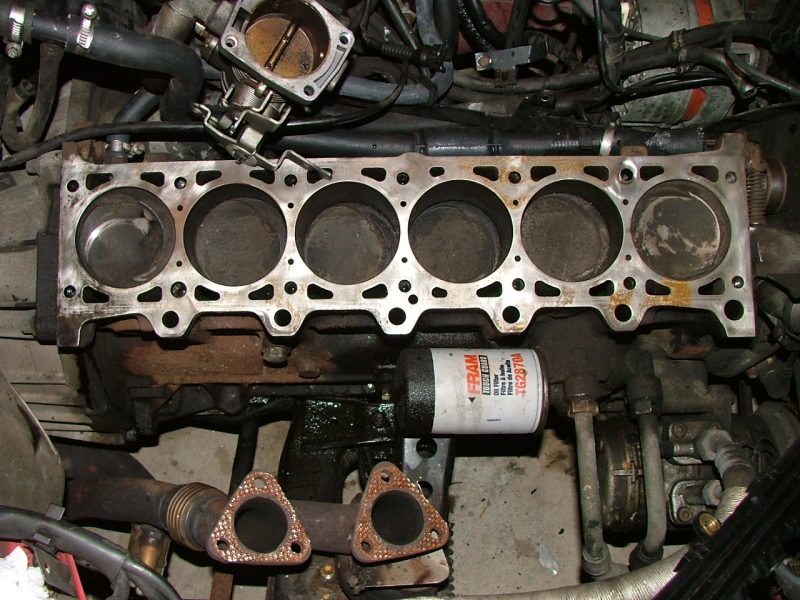
Six-cylinder in all its states
A high quality engine, if any, even bigger than cars, a six-cylinder engine is a must when it comes to motorcycles. Of course, this is almost what can be done best. Moreover, it is greed. We have a few V8s, but these are rare exceptions, artisanal or competition (Guzzi). But in the recent past, no manufacturer had a production motorcycle equipped with an engine exceeding six cylinders. This makes this engine a "maximum" configuration, full of an aura designed for sophisticated bikes that want to offer something that others do not have. Let's see what!
Forbidden in GP!
In our thread about four cylinders, we explained that it split into the board, which allowed us to take very high speeds. This is even more suitable for 6 cylinders. Moreover, the oldest probably remember the incredible Honda 6 out of 250 and 350 (297 cc) for sure). In the mid-sixties, Honda pushed the split theory to its climax in order to fight two jumps, which were propelled by horse racing under the influence of East German technicians.
Led by the great Mike Halewood, 250 brought back two world titles and 350 an additional title. Equipped with a 7-speed gearbox, the 250 developed 60 hp. at 18 rpm and 000–350 at 65 rpm ... In 17! At the time, there were no restrictions on the number of cylinders and gearboxes. To stop the technological ascent, FIM introduced new rules and Honda left the GP in 000 with Mike Bicycle. However, before leaving the scene at its peak, the 1967-cylinder engine showed that it had its place in the GP. Now there is no ban on race, it is limited to luxury, with a few exceptions.
Rich engine
6 cylinders, as well as 6 pistons, often 24 valves, 12 cams and the same number of tipping machines, 6 connecting rods and a crankshaft, which is difficult for a machine, because it is very long if it is a linear engine, which requires more precision. If it is a V engine it is even worse because then 2 cylinder heads have to be made.
In short, this prestigious mechanic is worth a (small) hand and that is what reserves it for exceptional motorcycles. Like tetrapods, six-legged ones are available in linear, flat or V-shape, depending on the declination of the machine it equips. In the recent past, it has been seen on the internet and on flat (Honda Gold Wing). Benelli 750 and 900 Six, BMW K 1600, Honda CBX and Kawasaki Z 1300 share engines online. The perfectly balanced inline six offers extraordinary elasticity, combining excellent cyclical regularity and strong alternating ability without suffering from low moving masses and perfect balancing.
Rare V6
Let's stay in the modern era and look at the V6 side, which offers the advantage of less width (or length depending on engine location), favoring aerodynamics, ground clearance and gyroscopic effect, since the crankshaft is shorter and therefore less heavy.
The Laverda V6 remains the most striking car ever. Its 90 ° open longitudinal engine is powered by Guillo Alfieri, who also signed the Citroën SM engine. When asked by Count Laverda, he envisioned a miniature SM to create a mechanism capable of restoring the brand's coat of arms. This 140 hp. 1000 cc was introduced at the 3 Golden Ball and transported at 1978 km / h in a straight Mistral line. But tired of its weight (283 kg for engine and transmission!) Associated with dangerous handling did not make her a champion, far from it.
Closer to us, let's report on a project based on the Mazda V6 engine. JDG will not see the light of day after the death of its unfortunate designer.
The Midalu 2010 V2500 also arrived in the 6s. Due to the cold, this Czech motorcycle will also be left without a future.
Finally, the only production V-engine is the Honda Gold Wing ... 180 ° open! It appeared on the GL 1500 in 1988 (already!) And continues today in 1800.
V-shaped and online !!!
The maximum interesting configuration, the engine of the Germanic Horex, known as VR 6. R for "Reihe", which means online in Goethe's language. With an opening angle of just 15 °, this curious engine gets the cylinders staggered to keep them out of each other.
Technology developed by Volkswagen that discreetly helped the designers of the Horex 1200 cc (163 hp @ 8800 rpm). Thanks to this compactness, the engine is not wide and is satisfied with a single cylinder head that covers the bank of one cylinder. However, it has three camshafts (AAFC). The middle one controls the exhaust of the Ar cylinder bank and the front intake, i.e. 9 valves because the Horex engine has 3 valves / cylinder. The rear AAC operates 6 rear intake valves, while the front AAC only handles 3 exhaust valves from the front. For example, not everything is invented yet !!!

